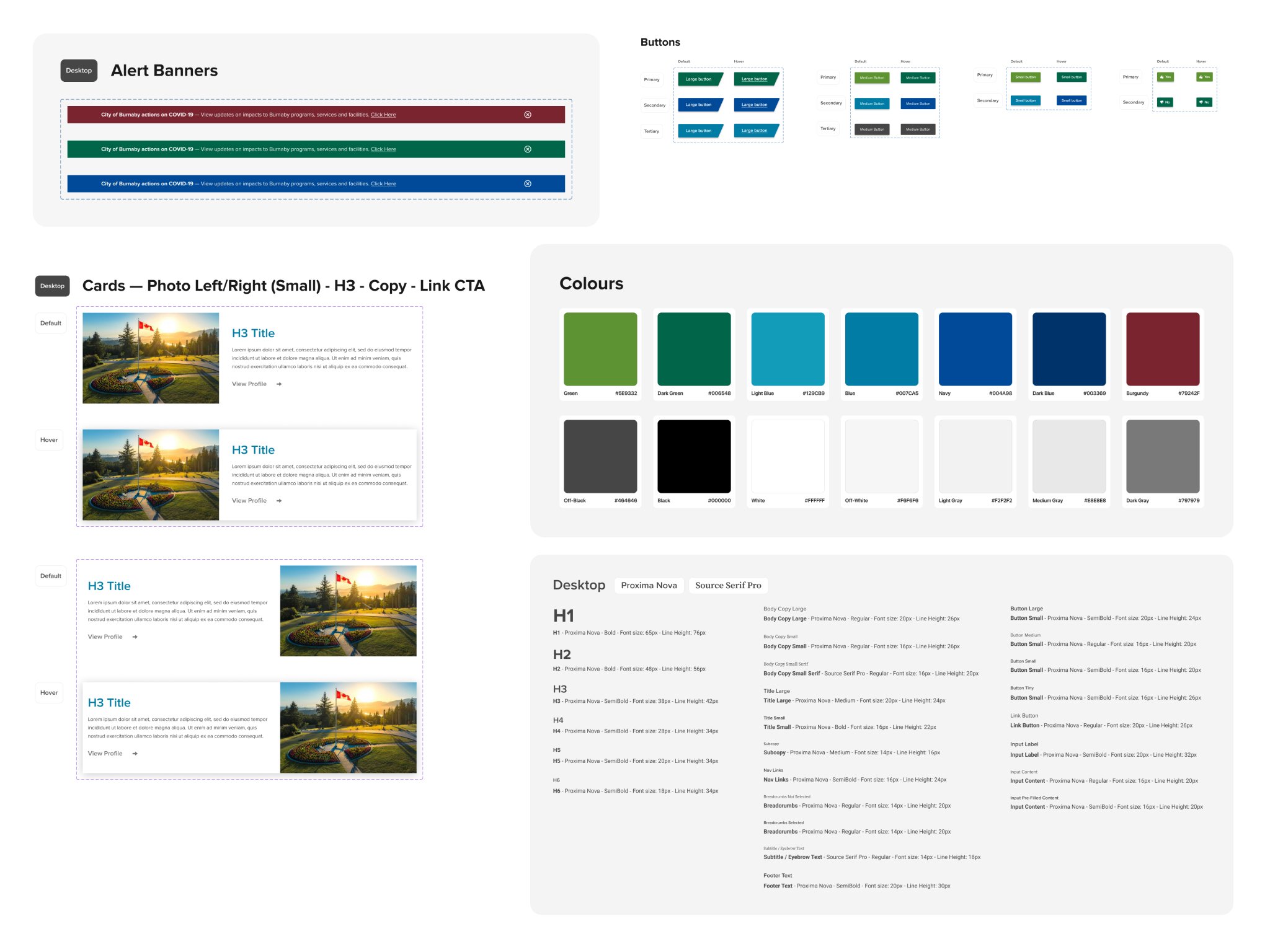City of Burnaby
In 2020, I had the privilege of spearheading the design of a municipal government website tailored to serve the residents of Burnaby, British Columbia.
Role
Visual Design Lead, User Experience Design
Agency
Domain7
Client
City of Burnaby
Year
2020
Located in the Lower Mainland of British Columbia, the city of Burnaby boasts a population of 250,000 residents. Burnaby is home to several high-tech companies, BC’s largest mall, a bustling urban transit system, an increasing urban population. As Burnaby continues to grow rapidly, it became evident to that its digital properties needed to adapt to better serve its citizens.
The previous Burnaby website, aged over a decade, posed significant navigation challenges with its cumbersome structure. Embarking on a comprehensive digital transformation project, I led the charge from the initial kickoff through to post-launch in a complete website redesign. Burnaby's objective was clear: to create a brand-new, user-centric website that effectively showcased the beauty and functionality of the city.
Given that the city had recently undergone an identity refresh, it was imperative to establish a shared understanding of the art direction for the project. To achieve this alignment among the various stakeholders, I opted to create a few style tiles, ultimately settling on one. This visual tool served as a reference point, ensuring that everyone involved in the project was in sync regarding the design direction and aesthetics we would be implementing.
During my collaboration with the development team at Domain7, I undertook the design of a comprehensive design system. This system was crafted to empower the Burnaby team to create visually appealing and user-friendly experiences on their new website.
To maximize efficiency and productivity, we developed this design system in parallel with our wireframing phase. This approach ensured minimal downtime and provided us with a strong foundation for the subsequent visual design phase. Larger design elements and system blocks were integrated in later sprints, allowing us to refine and expand the system as we progressed in locking down layouts and feature requirements.
In crafting the homepage, our primary objective was to ensure that users could swiftly and effortlessly accomplish pressing tasks. These priorities were identified through extensive interviews, which revealed key user needs such as accessing job openings, obtaining information about meetings and public hearings, and checking rec-center schedules, among others.
Based on user testing and feedback, we introduced a prominent search bar on the homepage. This decision was informed by the realization that users overwhelmingly preferred utilizing search as their go-to method for quickly locating the information they needed. By placing this search functionality front and center, we aimed to expedite access to vital information.
In the development of interior landing pages and basic content pages, the aim was to ensure compatibility with Drupal's layout builder system. We prioritized the creation of versatile card and content block elements, designed to be easily reusable in various contexts. This approach was taken to empower the Burnaby team to construct future pages beyond the scope of our initial project, providing them with a flexible and scalable framework for ongoing content management and expansion.








